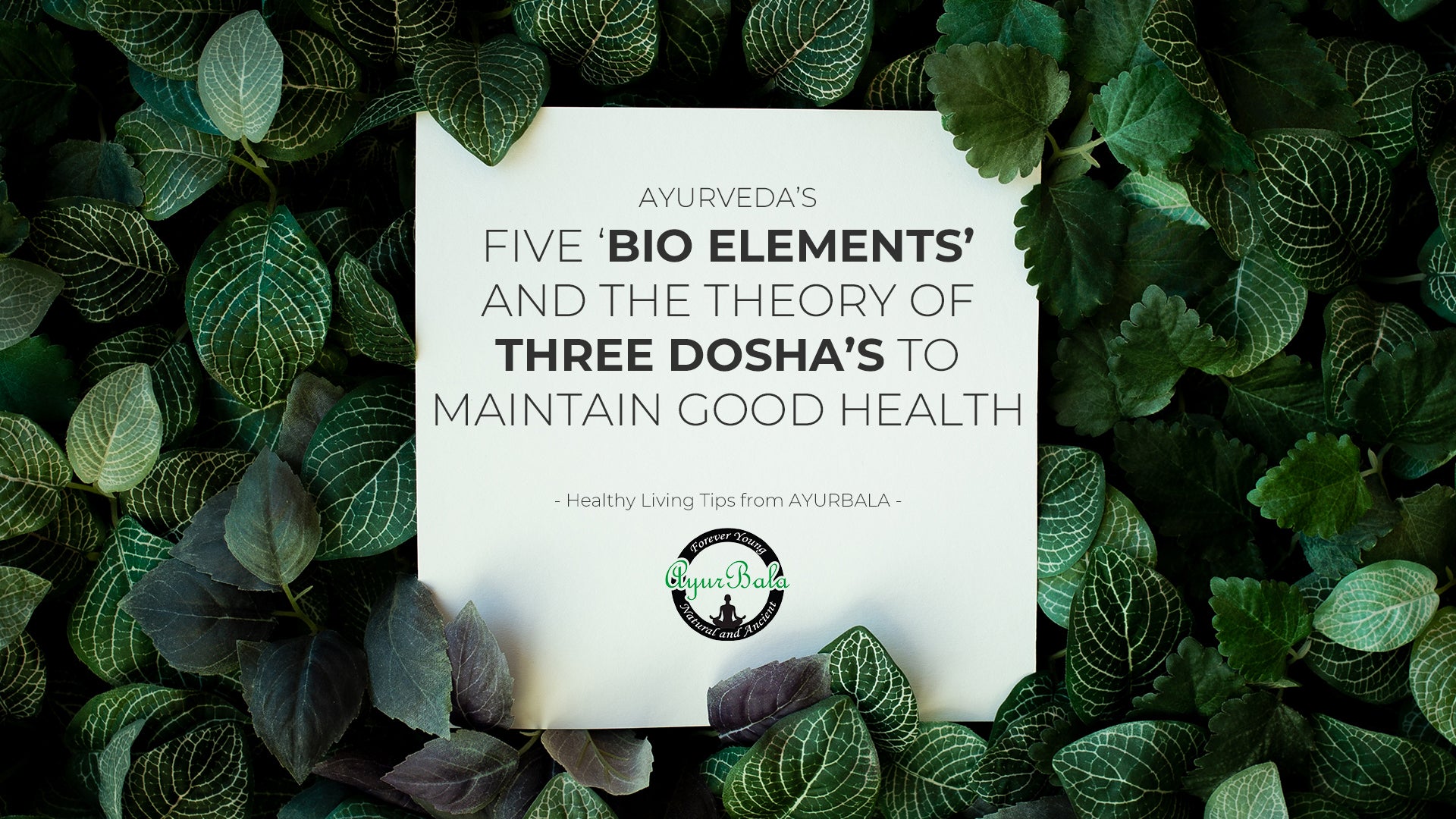Ayurveda’s five ‘Bio Elements’ and the theory of Three Dosha’s to maintain good health

Ayurveda recognizes a person as a miniature universe. Just as the universe is made of five building blocks in Ayurvedic belief, human body likewise is too. These five fundamental building blocks are space/ether (ākāśa); air/wind (vāyu); fire (tejas); water (jala); earth (pṛthvī). These five elements combines in pairs of two to form forces or humors (moods) in human body which brings good health when in state of ideal balance called Dosha’s or “tri- Dosha” collectively.
The theory of “Dosha” is central to Ayurveda medicine science. The tri doshas are called Vata, Pitta and Kapha. When the tri doshas are not in state of balance they causes various diseases and illnesses. In Ayurveda good health means state of complete wellbeing, physical, mental, and emotional.
Tri-Dosha’s are believed to reside in the body as shown in the diagram.

Vata is characterized by the mobile nature of Wind energy (Air) and is responsible for inspiration. Vata principle (wind) operates communication and movement of the body – it deals with the nervous system; with joints – where the movement takes place; with the elimination of waste and so on. Its main seat is the colon.
Pitta embodies the transformative nature of Fire energy and is responsible for transformation. Pitta (fire) relates to the metabolic processes in the body. It is responsible for the endocrine system (hormones) and digestive system (enzymes). The main organs of pitta are the small intestine, liver and duodenum.
Kapha reflects the binding nature of Water energy and is responsible for immunity. Kapha (earth) is related to the structure of the body composed of 7 bodily tissues, i.e. plasma, blood, muscle, Adipose tissue, bones (& cartilages), bone marrow, and sperm/ ovum.
Every person has a dominant Dosha or a combination of two dominant doshas which defines one’s inherent nature or Prakriti. If all three doshas are in harmony a person is in blissful state with enviable physical, mental and psychological health.
|
Dominant Element or Dosha |
Nature or Prakriti of body |
Career and attributes |
Potential Diseases & ailments |
Nutrition/exercise |
|
Vata (space + air) |
Thin bodies Impulsive, dry &, quick to like and quick to hate, learn and forget quickly |
Witty, singers, dancers, creative, maths, analysts, earn and spend money quickly |
Cold & flu and respiratory tract issues |
Yoga/ exercise. Foods good for digestion, veg, fruits, lean meat, milk etc. |
|
Pitta (fire + water) |
Muscular and flabby when obese Sharp, proud, show off, soft when |
Leaders, teachers, politics, activism, show business, cooking, arts |
Inflammation, acid reflux, heat boils, acne and plenty of moles, prone to obesity, nausea |
Yoga/ exercise, apples, avocados, coconuts, figs, melons, oranges, veg, grains, eggs |
|
Kapha (water + earth) |
Big broad bodies, strong compact but lazy, love routines |
Long term investors, business, excellent researchers and thinkers, doctors |
Swellings, tumors, depression, lethargy, colds bronchitis |
Yoga/ exercise. Light, warm diet with a predominance of bitter (greens), astringent (beans) and pungent tastes. |
It is important to know no matter what every individual has one dominant dosha but rarely a person can display two dominant doshas - Vata-Pitta, Pitta-Kapha and Kapha-Vata or extreme rare case a tri-dosha harmony.
So what is your dominant dosha? Let us learn in our next blog.
